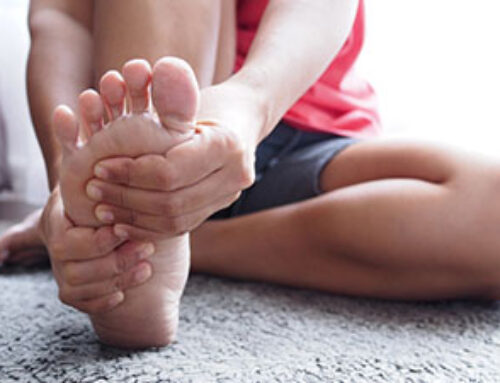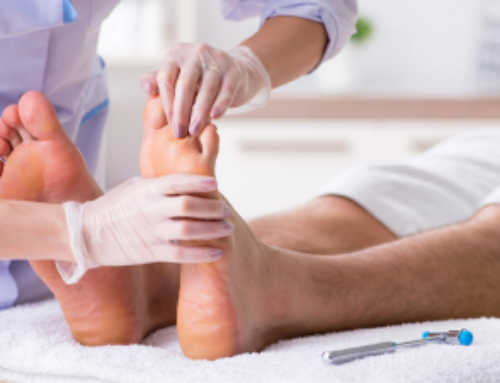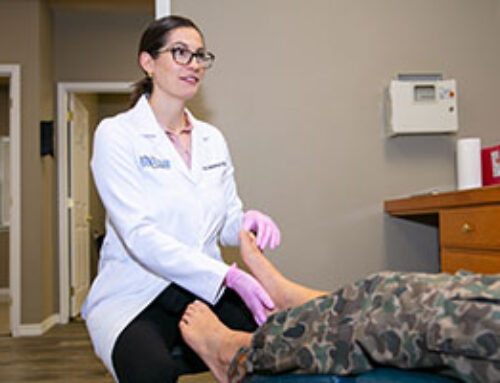Athlete’s foot is a common skin infection that can affect anyone. In fact, health experts estimate that 70 percent of people get athlete’s foot at some point in their lives.
Athlete’s foot is a form of ringworm. The infection is called “ringworm” because it can cause an itchy, red, circular rash. The fungus that causes the condition, Trichophyton, is often found on floors in public spaces and thrives in damp, warm, and humid conditions. Trichophyton is related to other fungi that cause infections in the skin, hair, and nails.
Is athlete’s foot contagious?
Athlete’s foot often spreads in public areas where people walk barefoot, including gym locker rooms, swimming pools, and saunas. The condition is contagious and can spread through contact with contaminated surfaces, including towels, bedding, socks, and shoes. It can also spread from your foot to other parts of your body, especially if you scratch an infected area of your foot.
The fungus that causes athlete’s foot needs warmth and moisture to grow. Wearing socks and tight-fitting shoes that keep your feet warm and damp creates the perfect environment for athlete’s foot to grow.
Types of athlete’s foot
If you become infected, your symptoms may vary depending on the type of athlete’s foot you have. In general, there are four types of athlete’s foot:
- Toe web infection is the most common type of athlete’s foot. The skin between your toes may change color, crack, peel, or flake.
- Moccasin-type infection can affect the edges and bottoms of the feet, including the heels. The feet may be sore for a few days as the skin thickens and cracks.
- Vesicular-type infection is characterized by bumps or fluid-filled blisters, usually on the bottom of the feet.
- Ulcerative infection is the rarest type of athlete’s foot. Open sores appear between the toes or on the bottom of the feet.
Symptoms of athlete’s foot
As a contagious fungal infection, athlete’s foot can cause an itchy, stinging, burning rash to form on one or both of your feet. Signs of athlete’s foot include:
- Peeling or cracked skin between your toes
- Dry, scaly skin on the bottom or side of your foot
- Itchiness after you remove your shoes and socks
- Burning or stinging
- Inflamed skin that may appear red, purple, or gray, depending on your skin tone
- Thick, swollen skin
Left untreated, the infection can spread from toe to toe or to the sides and bottoms of the feet. The fungus can also spread to your hands, so it’s important to wash your hands immediately with soap and warm water after you touch an infected area of your foot.
In severe cases of athlete’s foot, you may develop blisters or open sores between your toes, and your toenails may break into small pieces and fall out.
Athlete’s foot vs. dry skin conditions
Like athlete’s foot, dry skin is a condition often characterized by an itching, tingling, or burning sensation. The skin on the foot may become scaly or cracked. Some people have naturally dry skin, while others develop dry skin from time to time or as they age. Treatments for dry skin and cracked heels include daily moisturizing and soaking your feet before bed.
While athlete’s foot often develops between the toes or on the sides of the foot, dry skin tends to occur on the heel, under the toes, and sometimes on top of the foot.
Athlete’s foot vs. foot eczema
Foot eczema and athlete’s foot have similar symptoms but require different treatments. While athlete’s foot is a fungal infection, eczema is an inflammatory skin condition. Athlete’s foot can be cured with antifungal medications, but eczema is usually a lifelong condition. Also, eczema isn’t contagious, so you can’t catch it from other people or give it to anyone.
When eczema occurs on the feet, it can be itchy and painful. Common symptoms of foot eczema include swollen, flaking, or cracked skin and blisters that crust over. In severe cases, people may find it difficult to walk.
Many different things can trigger eczema flare-ups, including stress, working conditions in which your feet get wet, and exposure to certain metals. It’s important to keep your feet hydrated with moisturizer when you have eczema. If your feet become dry, blisters may crack open and put you at risk for infections.
5 ways to prevent athlete’s foot
Essential oils—such as tea tree, bitter orange, peppermint, and eucalyptus—can prevent the growth of bacteria, but they may not completely eliminate the fungal infection that causes athlete’s foot. However, there are many ways to reduce your risk of getting athlete’s foot:
- Wash your feet every day. Use soap and warm water, and always clean between your toes. Rinse and dry your feet thoroughly, especially between the toes. Also, be sure to completely dry your feet and the spaces between your toes after swimming.
- Change your socks at least once a day (or more often if your feet get really sweaty). Make sure your feet are dry before putting on socks. Wear clean socks made from cotton, wool, silk, or other moisture-wicking material.
- Wear well-ventilated shoes. Rotate the shoes you wear from day to day and allow your shoes to dry out for at least 24 hours between use. Wear shoes or sandals that allow your feet to get air, especially during the warmer months. The best materials for shoes are canvas or leather.
- Protect your feet in public places. Wear waterproof sandals or flip-flops in gym locker rooms, public swimming pools, shower areas, and saunas.
- Avoid sharing shoes, towels, or unwashed bedding. Wash your sheets and towels regularly. The fungus that causes athlete’s foot can spread to other parts of the body, often on the hands or a towel.
Treatments for athlete’s foot
Athlete’s foot rarely goes away on its own. Left untreated, it can spread to other areas of your body, including the groin, hands, and nails. The fungus usually spreads by using a towel to dry off after showering or swimming. When athlete’s foot spreads to the groin, the condition is called jock itch.
In most cases, over-the-counter creams, ointments, gels, sprays, and powders are effective treatments for athlete’s foot. You can apply these topical medications directly to the skin. If your symptoms are severe, or if a topical medicine didn’t work, your doctor may prescribe an oral antifungal medication.
Be sure to finish your full course of medicine. As athlete’s foot begins to heal, the itchiness and irritation may fade. Even if your symptoms go away, the fungus may still be present. If you stop your treatments too soon, athlete’s foot may reappear and be harder to treat.
When to see a doctor for athlete’s foot
Athlete’s foot can usually be treated with over-the-counter medications, but for more extreme cases, you may need to make an appointment with a podiatrist. Be sure to see a doctor if:
- Your symptoms don’t improve within two weeks of treatment with an over-the-counter medication
- The area becomes infected
- The infection spreads to other areas of your body
- You develop a fever
- You have diabetes
- You have a weakened immune system
Athlete’s foot is a common condition with unpleasant symptoms. Fortunately, there are steps you can take to prevent athlete’s foot, and treatments are highly effective. If you need to see a podiatrist for athlete’s foot, schedule an appointment with Metro Tulsa Foot & Ankle Specialists today.
Subscribe to stay up-to-date on news and tips from us.





